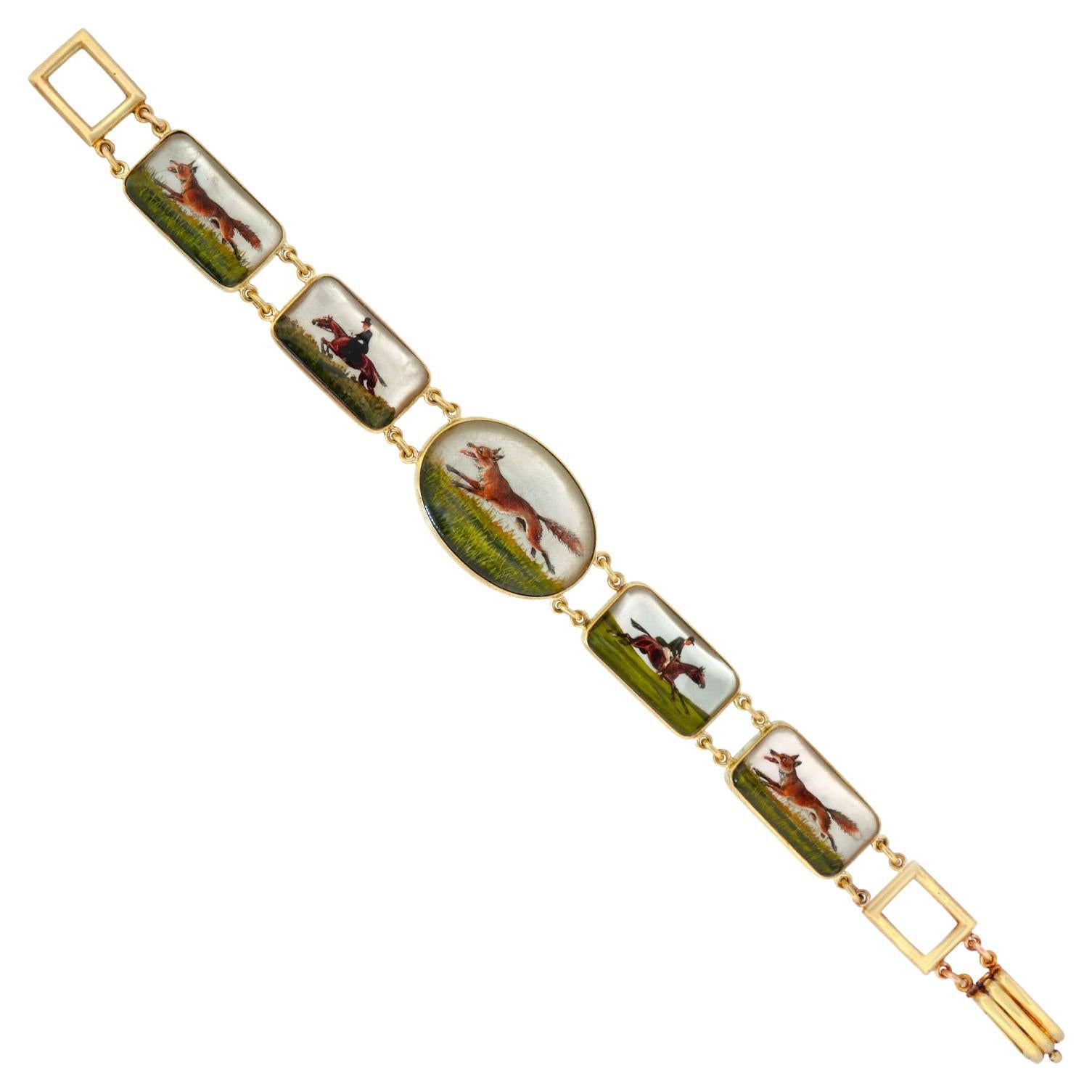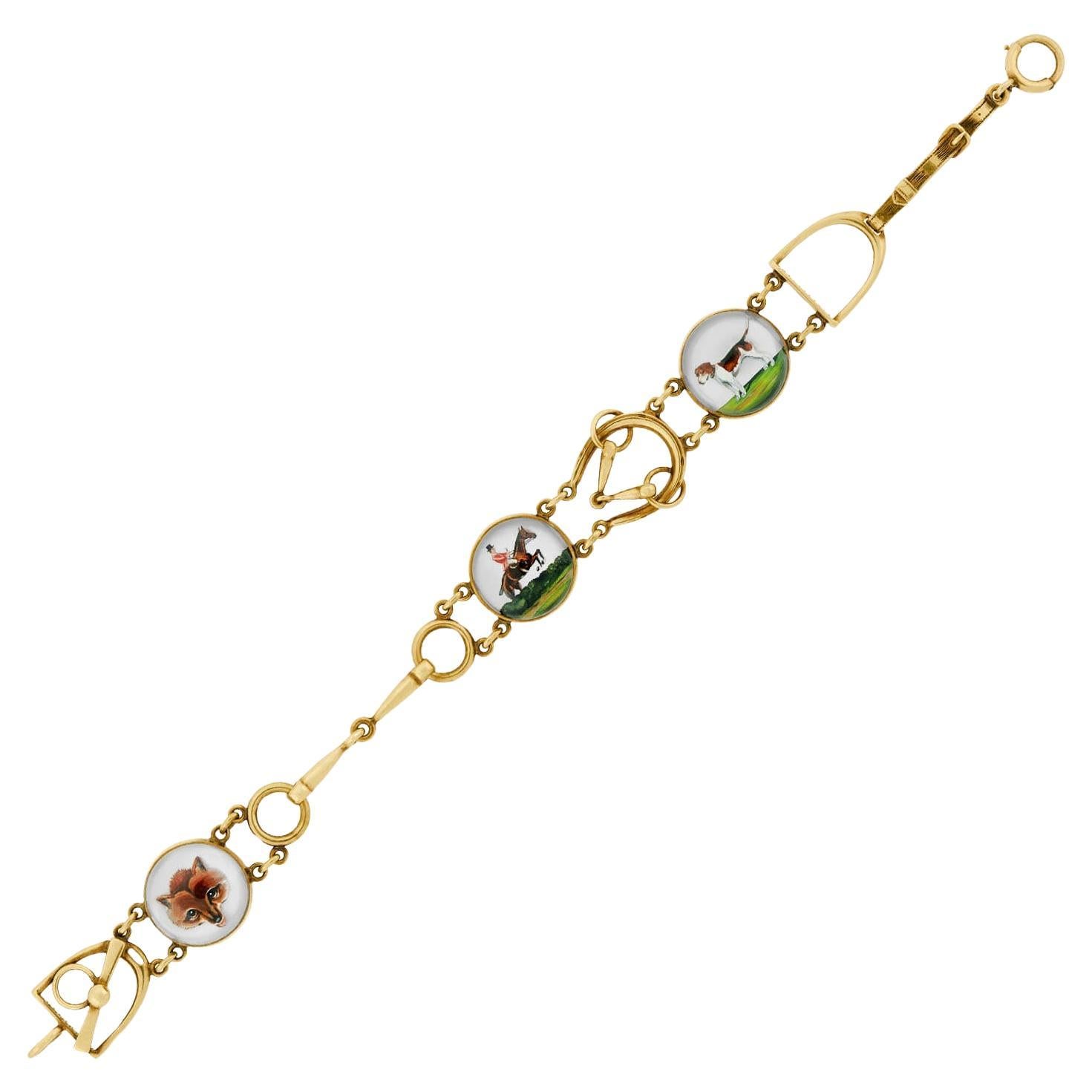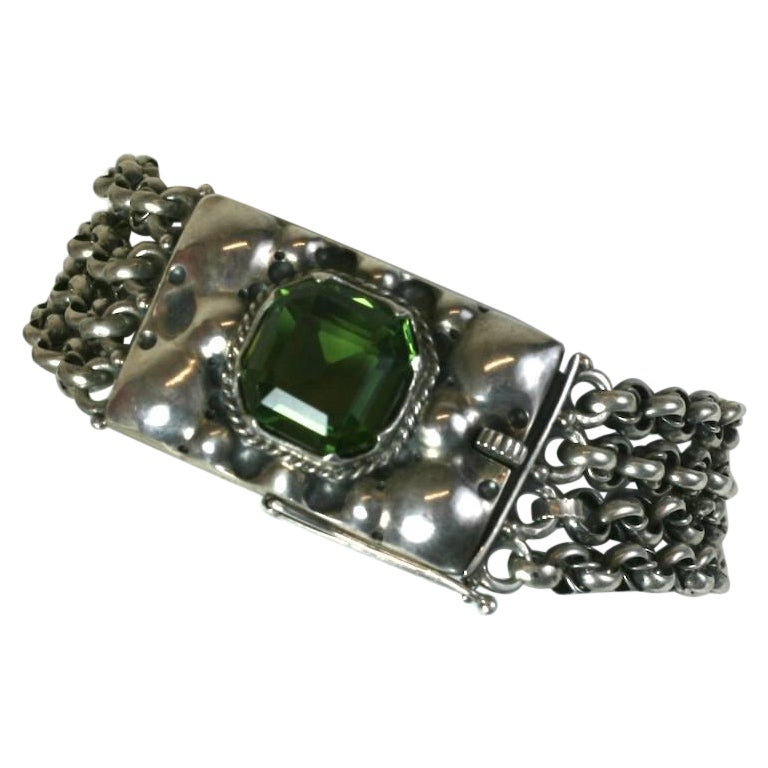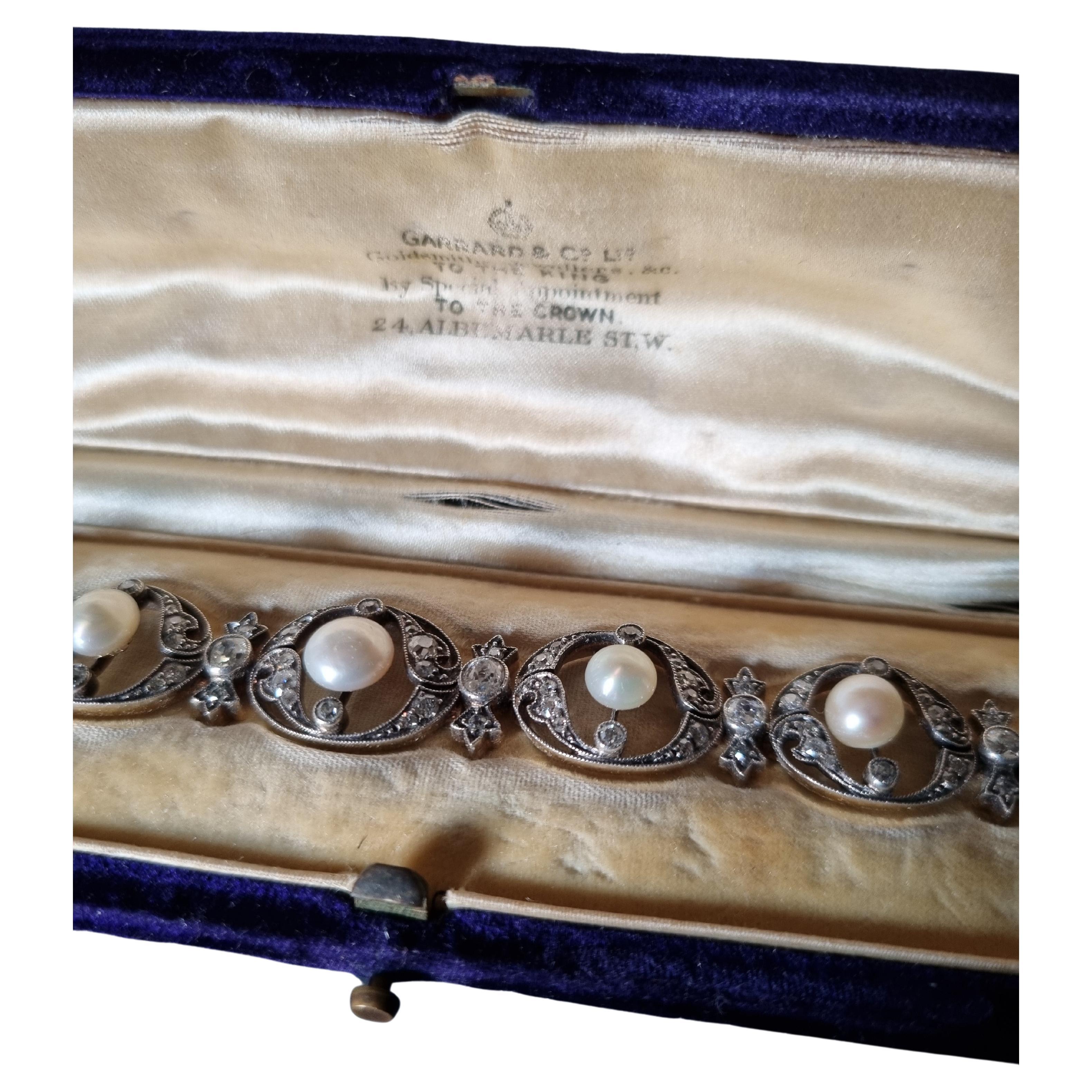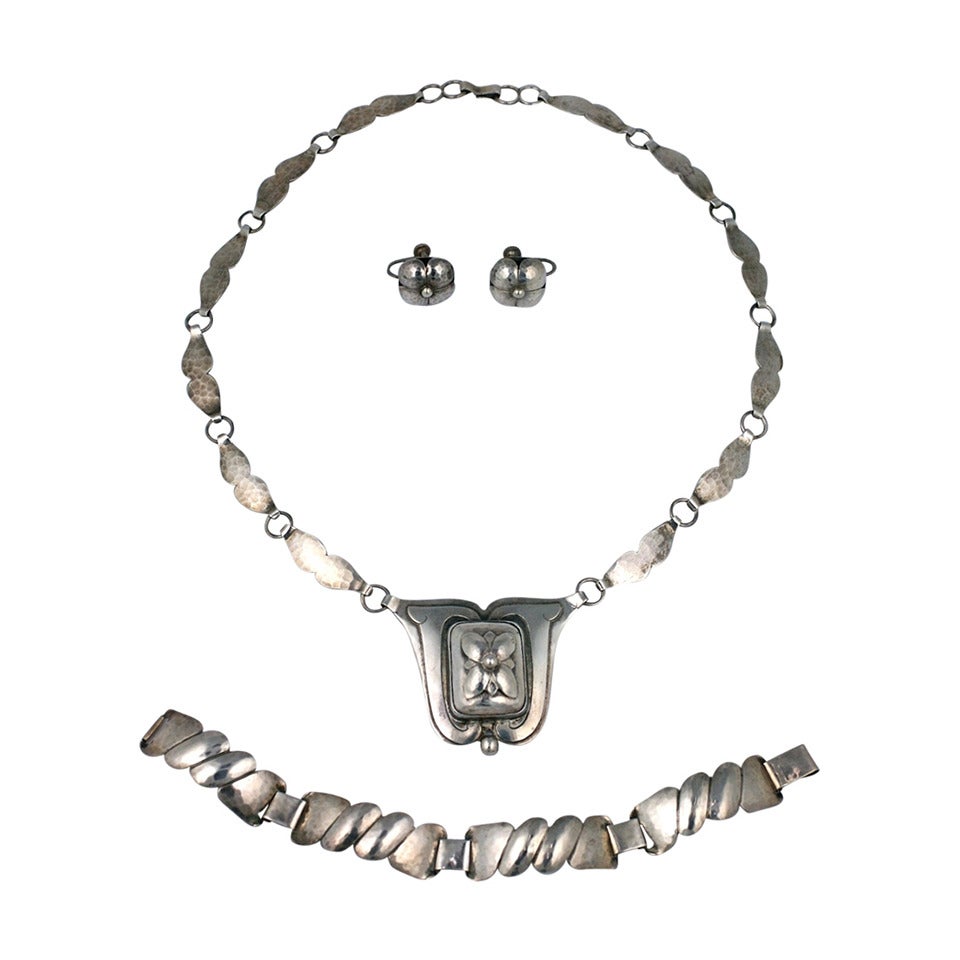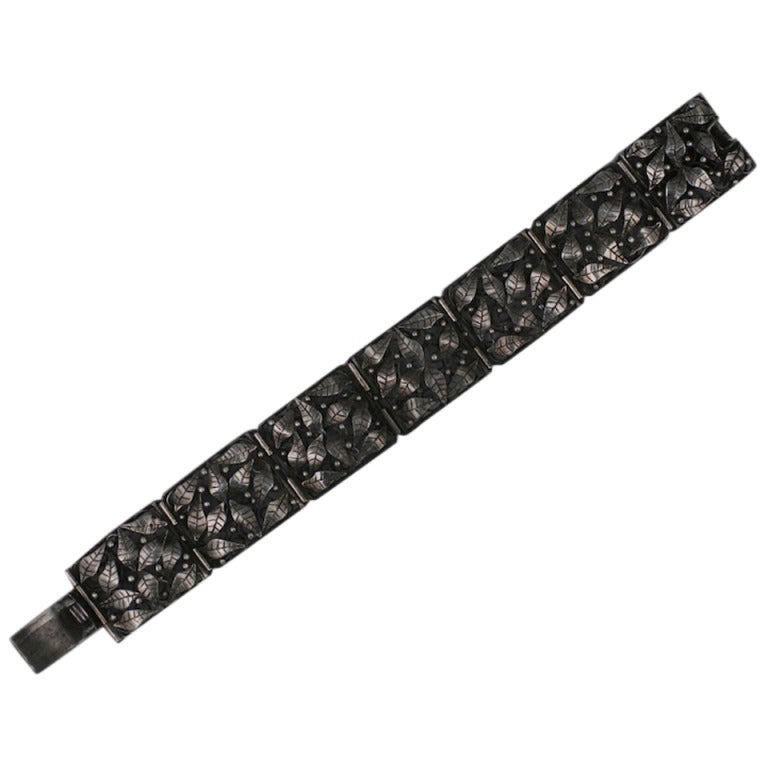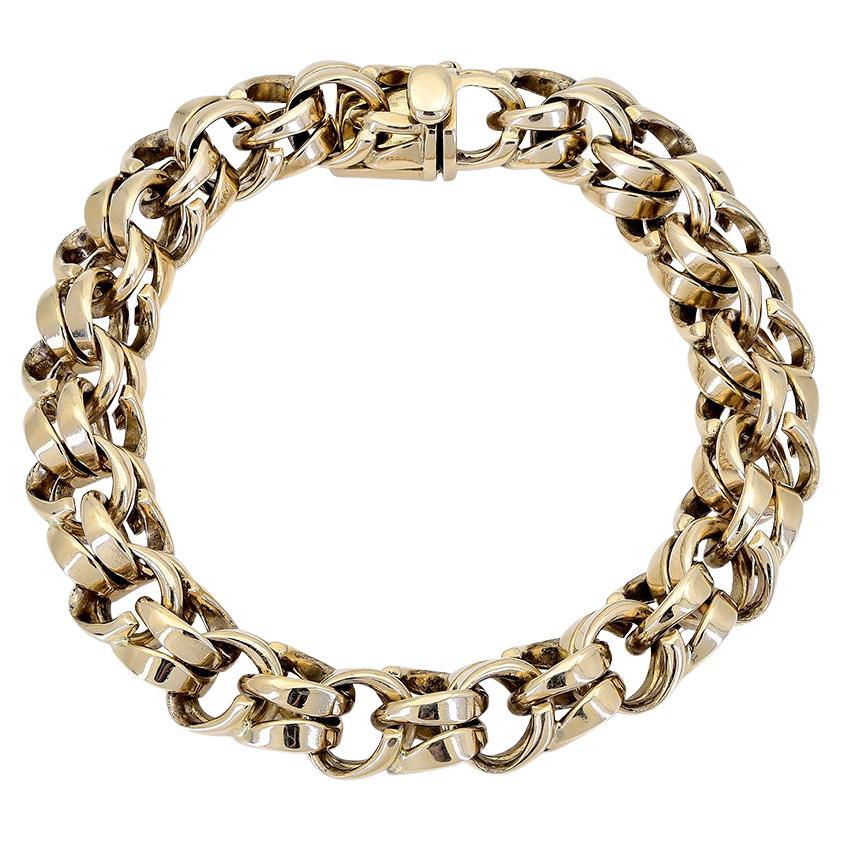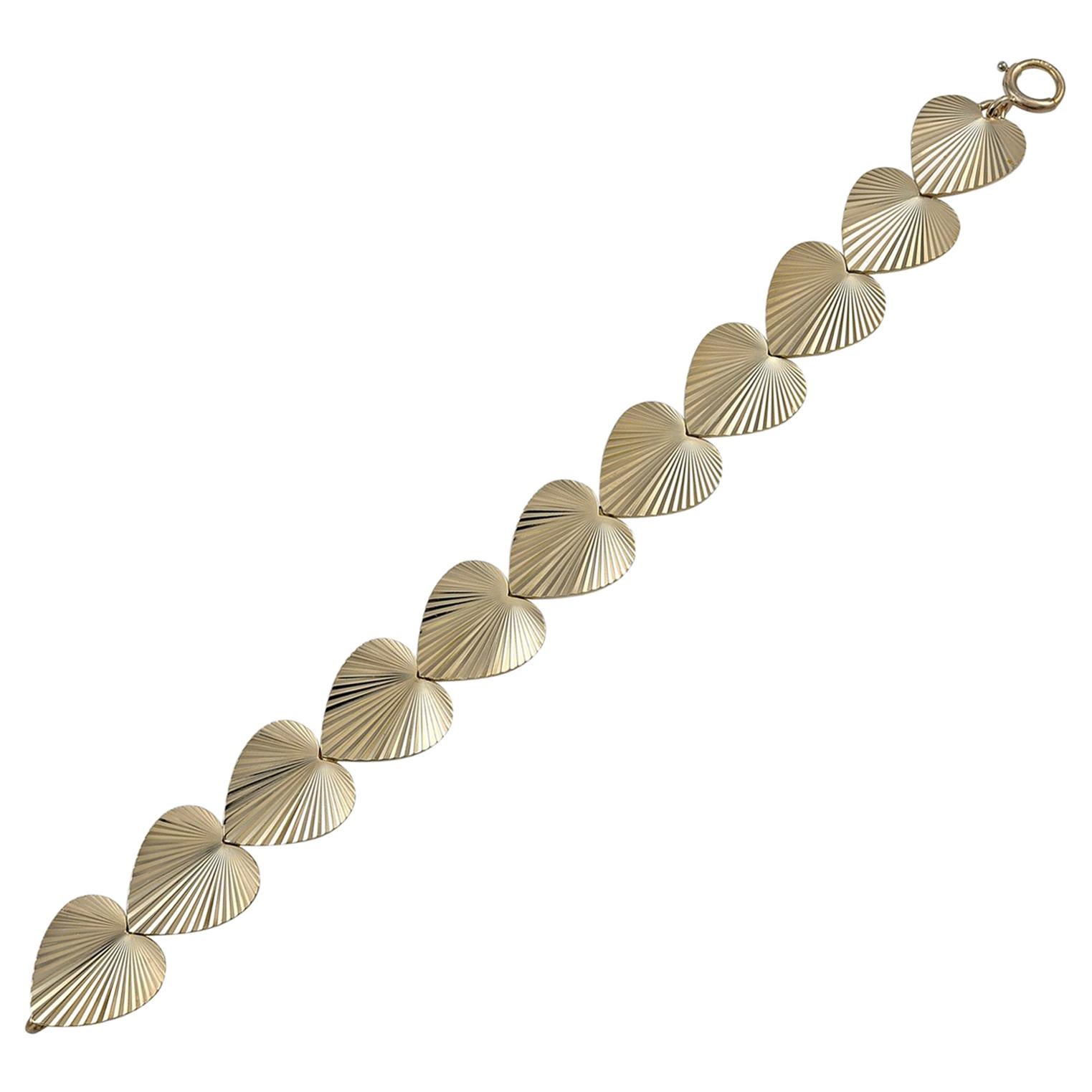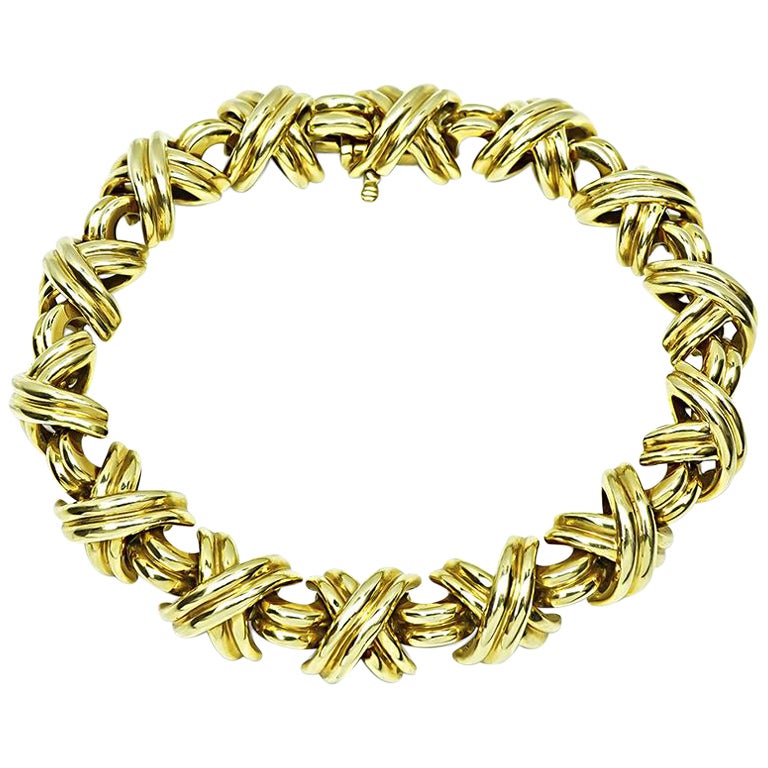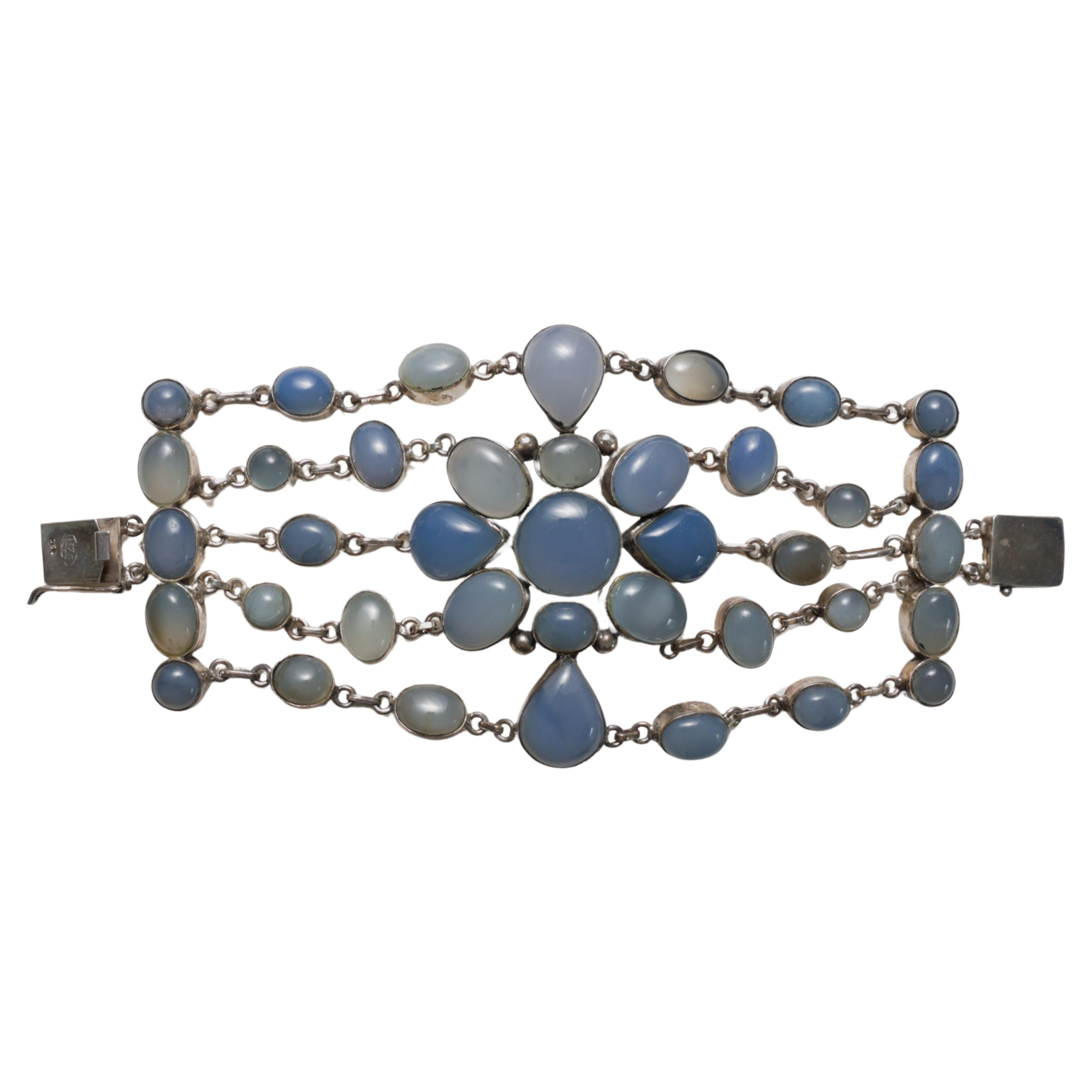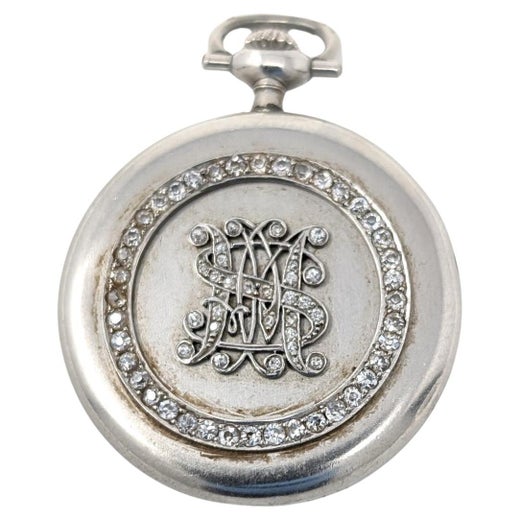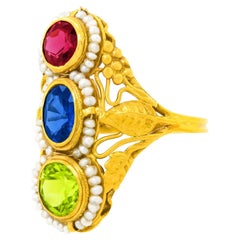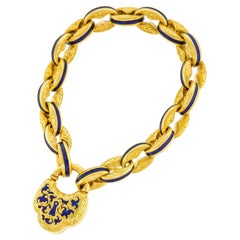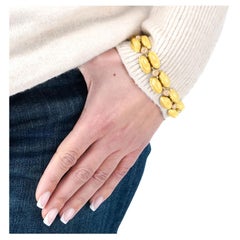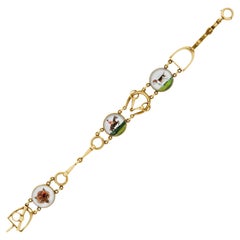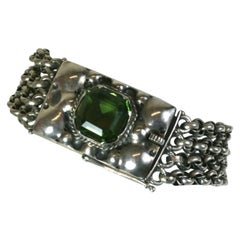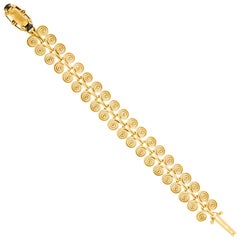
Marcus & Co. Arts & Crafts Gold Bracelet, circa 1905
View Similar Items
Marcus & Co. Arts & Crafts Gold Bracelet, circa 1905
About the Item
- Creator:
- Metal:
- Stone:
- Stone Cut:
- Weight:30 g
- Dimensions:Length: 7.63 in (193.81 mm)
- Style:
- Place of Origin:
- Period:
- Date of Manufacture:Circa 1905
- Condition:
- Seller Location:Litchfield, CT
- Reference Number:Seller: 222041stDibs: LU23010083672
Marcus & Co.
Throughout the early 20th century, Marcus & Co. established a reputation as one of the finest American producers of Art Nouveau jewelry. The firm’s innovative techniques included the use of plique-à-jour enameling. During the 1900s, this rare method was used by only three other jewelry companies in the United States — Tiffany & Co., Riker Bros. and Whiteside and Blank.
Marcus & Co. was founded in 1892, in New York City, by Herman Marcus and his son William. Herman was born and raised in Germany, where he worked as a jeweler for Ellemeyer, the court jewelers of Dresden, before moving to the United States in 1850.
After arriving in New York City, Herman worked as a designer at several prestigious luxury firms, including Ball, Black & Co., Tiffany & Co. and was a partner at Starr and Marcus before he went into business with William. Later, they were joined by Herman’s other son, George.
Herman worked with his sons until his death in 1899, when William and George expanded the firm to include a silversmithing department to make serveware. However, Marcus & Co. focused mainly on jewelry design and manufacturing, offering Revival-style pieces.
In 1900, the company exhibited a series of striking orchid motif brooches at the Exposition Universelle in Paris. The brooches attracted critical acclaim for their plique-à-jour enameling and intricate detail — characteristics that would become Marcus & Co.’s signature.
The company’s Art Nouveau jewelry took shape during the 1920s and 1930s. Cocktail rings, engagement rings, necklaces and cufflinks featured fine diamonds, natural pearls and gems rarely seen during that period, such as peridots, zircons, spinels and chrysoberyls. Marcus & Co.’s designs were comparable by critics to fine art jewelry made by René Lalique and attracted high-profile clientele like business tycoon John D. Rockefeller.
Despite Marcus & Co.’s success, the firm closed briefly during World War II. In 1962, they merged with the company Black, Starr & Frost.
Marcus & Co. pieces are still highly coveted among jewelry collectors. The firm’s Art Nouveau plique-à-jour accessories, a technique that sees enamel powder applied to cells on a thin sheet of copper foil or mica and then etched away — instead applying the enamel directly to metal — are particularly collectible. In 2011, a Morning Glory plique-à-jour pendant brooch and chain made in 1900 sold at a Sotheby’s auction for $302,500.
On 1stDibs, discover antique Marcus & Co. brooches, rings and decorative objects.
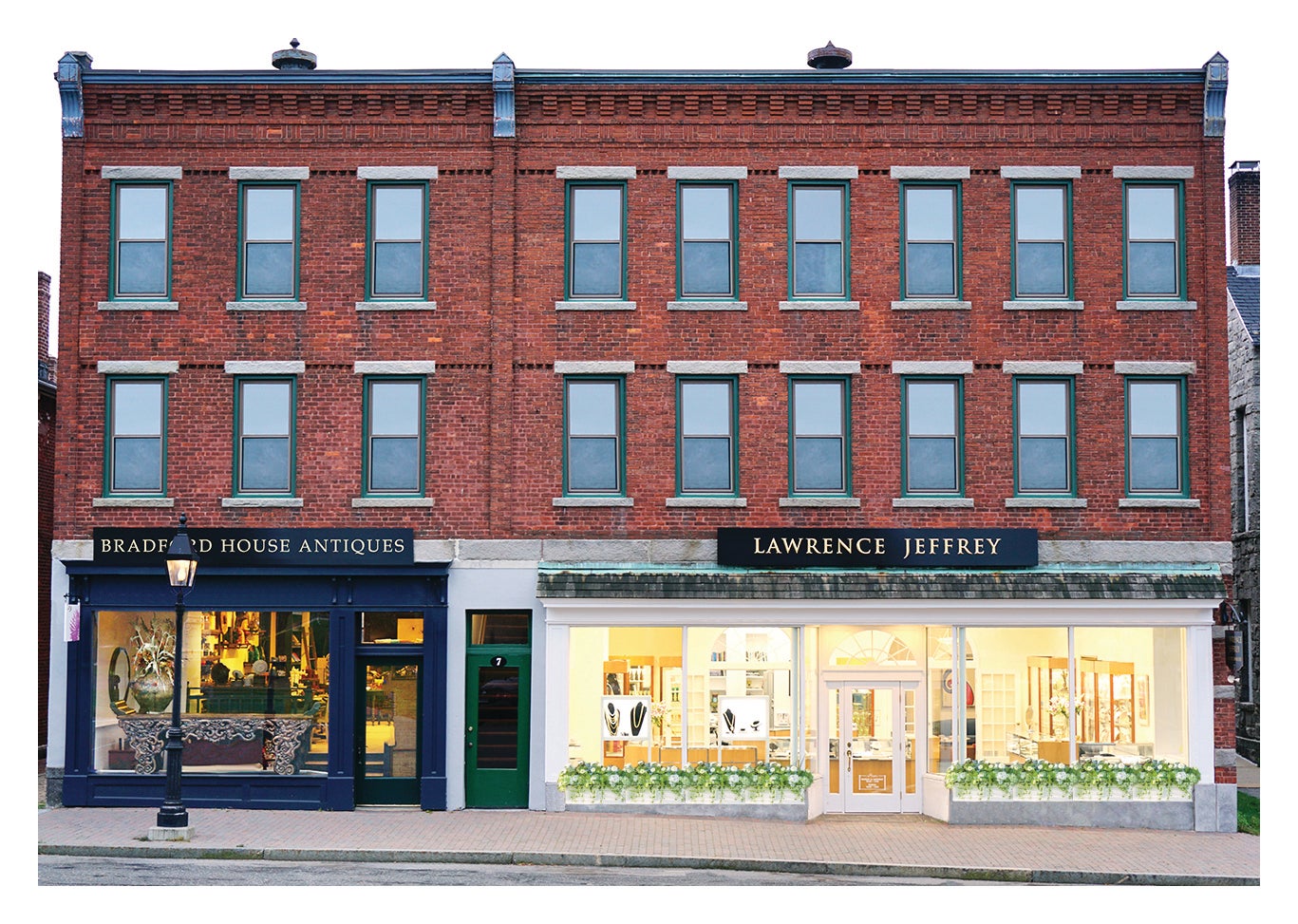
More From This Seller
View AllVintage 1910s American Link Bracelets
Crystal, 14k Gold, Yellow Gold
Antique Early 1900s American Arts and Crafts Fashion Rings
Peridot, Sapphire, Rhodolite, Freshwater Pearl, 14k Gold, Yellow Gold
Antique 1870s Victorian Link Bracelets
Gold, Enamel
Vintage 1950s Slovak Link Bracelets
Gold, 14k Gold
Vintage 1920s German Art Deco Link Bracelets
Gold, 14k Gold
Antique 1890s French Link Bracelets
Gold, 18k Gold, Yellow Gold
You May Also Like
Vintage 1920s American Art Deco Link Bracelets
Crystal, 14k Gold
Vintage 1940s European Arts and Crafts Link Bracelets
Silver
Vintage 1930s Czech Link Bracelets
Gilt Metal
Antique 1890s English Belle Époque Link Bracelets
Diamond, Natural Pearl, 18k Gold, Platinum
Vintage 1910s American Arts and Crafts Link Necklaces
Sterling Silver
Vintage 1950s American Link Bracelets
Sterling Silver
